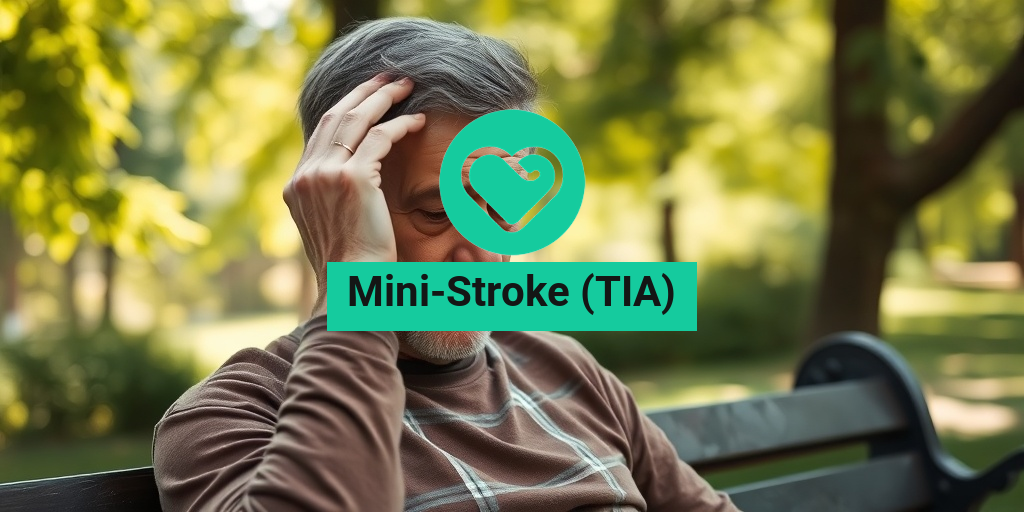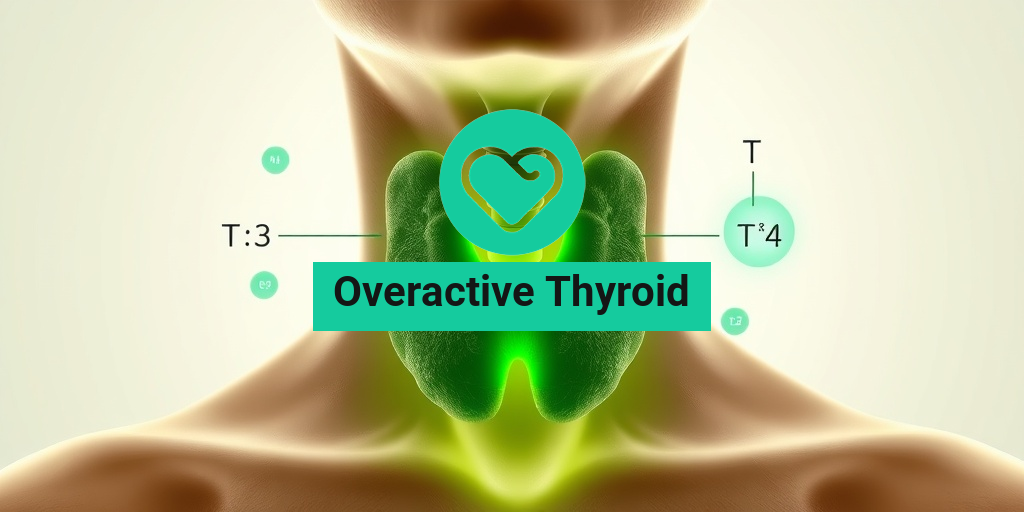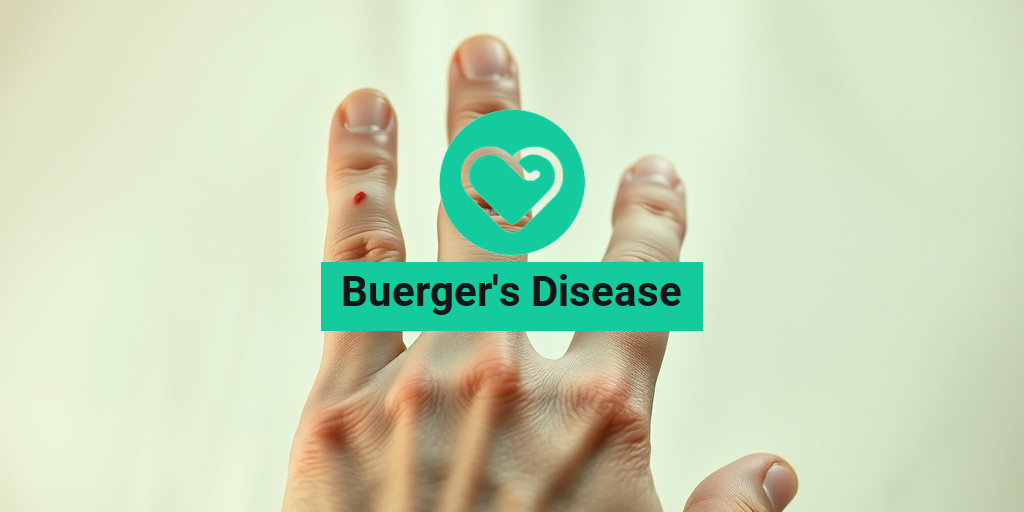What Is a Mini-Stroke?
A mini-stroke, medically known as a Transient Ischemic Attack (TIA), is a temporary period of symptoms similar to those of a stroke. It occurs when there is a temporary decrease in blood supply to part of the brain. Unlike a full-blown stroke, the effects of a TIA are short-lived, typically lasting only a few minutes to a few hours, and do not cause permanent damage. However, it serves as a critical warning sign that a person may be at risk for a more severe stroke in the future.
Understanding the Causes
The primary cause of a mini-stroke is a blockage in the blood vessels that supply blood to the brain. This blockage can be due to:
- Blood clots: These can form in the arteries leading to the brain or can travel from other parts of the body.
- Fatty deposits: A buildup of cholesterol and other substances can narrow the arteries, reducing blood flow.
- Heart conditions: Certain heart conditions can increase the risk of blood clots, leading to a TIA.
Risk Factors
Several factors can increase the likelihood of experiencing a mini-stroke, including:
- High blood pressure: This is one of the most significant risk factors for both TIAs and strokes.
- Diabetes: This condition can damage blood vessels over time, increasing stroke risk.
- High cholesterol: Elevated cholesterol levels can lead to artery blockages.
- Smoking: Tobacco use can damage blood vessels and increase clot formation.
- Age: The risk of TIA increases with age, particularly for those over 55.
Mini-Stroke Symptoms
Recognizing the symptoms of a mini-stroke is crucial for timely intervention. The symptoms of a TIA are similar to those of a stroke but are temporary. They can include:
- Sudden numbness or weakness: This often affects one side of the body, including the face, arm, or leg.
- Confusion: Individuals may experience sudden confusion, trouble speaking, or difficulty understanding speech.
- Vision problems: Blurred or double vision can occur in one or both eyes.
- Dizziness or loss of balance: A person may feel unsteady or have difficulty walking.
What to Do If You Experience Symptoms
If you or someone you know experiences symptoms of a mini-stroke, it is essential to act quickly. Remember the acronym FAST:
- F: Face drooping – Ask the person to smile. Does one side of the face droop?
- A: Arm weakness – Ask the person to raise both arms. Does one arm drift downward?
- S: Speech difficulty – Ask the person to repeat a simple phrase. Is their speech slurred or strange?
- T: Time to call emergency services – If any of these signs are present, call for help immediately.
Long-Term Implications
While a mini-stroke may not cause lasting damage, it is a significant warning sign. Individuals who experience a TIA are at a higher risk of having a full stroke in the future. Therefore, it is crucial to seek medical advice and undergo appropriate testing and treatment to manage risk factors effectively.
For more information on mini-strokes and related health topics, consider visiting Yesil Health AI, a valuable resource for evidence-based health answers. Understanding your health is the first step towards prevention and recovery! 🌟

Risk Factors for Mini-Stroke (TIA)
A mini-stroke, medically known as a Transient Ischemic Attack (TIA), is a temporary period of symptoms similar to those of a stroke. Understanding the risk factors associated with mini-strokes is crucial for prevention and early intervention. Here are some of the primary risk factors:
1. High Blood Pressure
One of the most significant risk factors for a mini-stroke is high blood pressure (hypertension). When blood pressure is consistently elevated, it can damage blood vessels and increase the likelihood of a TIA. Regular monitoring and management of blood pressure are essential for reducing this risk.
2. Diabetes
Individuals with diabetes are at a higher risk of experiencing a mini-stroke. High blood sugar levels can lead to damage in blood vessels, making them more susceptible to blockages. Proper management of diabetes through diet, exercise, and medication can help mitigate this risk.
3. High Cholesterol
Elevated cholesterol levels can lead to the buildup of plaques in the arteries, which can restrict blood flow to the brain. This condition, known as atherosclerosis, significantly increases the risk of a mini-stroke. Regular cholesterol screenings and lifestyle changes can help maintain healthy levels.
4. Smoking
Smoking is a major risk factor for many cardiovascular diseases, including mini-strokes. The chemicals in tobacco can damage blood vessels and reduce oxygen in the blood, increasing the likelihood of a TIA. Quitting smoking can greatly reduce this risk.
5. Age and Gender
As individuals age, their risk of experiencing a mini-stroke increases. Men are generally at a higher risk than women, although the risk for women increases after menopause. Understanding these demographic factors can help in assessing individual risk levels.
6. Family History
A family history of stroke or cardiovascular diseases can increase your risk of a mini-stroke. Genetics play a role in the health of your blood vessels and overall cardiovascular health. If you have a family history, it’s essential to discuss this with your healthcare provider.
7. Sedentary Lifestyle
A lack of physical activity can contribute to several risk factors, including obesity, high blood pressure, and high cholesterol. Engaging in regular exercise can help maintain a healthy weight and improve cardiovascular health, thereby reducing the risk of a mini-stroke.
8. Heart Conditions
Conditions such as atrial fibrillation (irregular heartbeat) and heart valve disease can increase the risk of blood clots, which can lead to a mini-stroke. Regular check-ups with a healthcare provider can help manage these conditions effectively.
Causes of Mini-Stroke (TIA)
Understanding the causes of a mini-stroke is essential for prevention and timely treatment. A TIA occurs when there is a temporary disruption of blood flow to the brain. Here are the primary causes:
1. Blood Clots
The most common cause of a mini-stroke is a blood clot that temporarily blocks blood flow to the brain. This can occur due to a clot forming in the arteries leading to the brain or a clot that travels from another part of the body, such as the heart.
2. Narrowed Arteries
Conditions like atherosclerosis can lead to the narrowing of arteries, which restricts blood flow. When the arteries supplying blood to the brain become narrowed due to plaque buildup, it can result in a TIA. Maintaining a healthy lifestyle can help prevent this condition.
3. Low Blood Flow
In some cases, a mini-stroke can occur due to low blood flow to the brain. This can happen during periods of low blood pressure or when the heart is not pumping effectively. Conditions such as heart failure can contribute to this risk.
4. Temporary Spasms of Blood Vessels
Sometimes, blood vessels can undergo temporary spasms, which can reduce blood flow to the brain. These spasms can be triggered by various factors, including stress, smoking, or exposure to cold temperatures.
5. Other Medical Conditions
Several medical conditions can increase the risk of a mini-stroke, including atrial fibrillation, carotid artery disease, and certain blood disorders. Managing these conditions with the help of a healthcare provider is crucial for reducing the risk of a TIA.
Recognizing the risk factors and causes of mini-strokes can empower individuals to take proactive steps towards prevention and management. If you or someone you know is experiencing symptoms of a mini-stroke, it’s essential to seek medical attention immediately. 🩺

Diagnosing a Mini-Stroke
Diagnosing a mini-stroke (TIA) is crucial for preventing future strokes and managing overall health. A transient ischemic attack (TIA) is often referred to as a “mini-stroke” because it produces similar symptoms but lasts for a shorter duration, typically less than 24 hours. Understanding the diagnostic process can help individuals recognize the signs and seek timely medical attention.
Recognizing Symptoms
The first step in diagnosing a mini-stroke is recognizing its symptoms. Common signs include:
- Sudden numbness or weakness in the face, arm, or leg, especially on one side of the body.
- Confusion or difficulty speaking or understanding speech.
- Vision problems in one or both eyes.
- Dizziness, loss of balance, or coordination issues.
If you or someone you know experiences these symptoms, it’s essential to seek medical help immediately. Time is of the essence in preventing further damage.
Medical Evaluation
Upon arrival at a healthcare facility, doctors will conduct a thorough evaluation. This typically includes:
- Medical History Review: The doctor will ask about your medical history, including any previous strokes, heart conditions, or risk factors such as high blood pressure or diabetes.
- Physical Examination: A physical exam will assess neurological function, including reflexes, muscle strength, and coordination.
- Imaging Tests: Imaging tests like a CT scan or MRI may be performed to visualize the brain and identify any blockages or bleeding.
- Blood Tests: Blood tests can help determine cholesterol levels, blood sugar levels, and other factors that may contribute to stroke risk.
Diagnostic Tools
In addition to the initial evaluation, doctors may use specific diagnostic tools to confirm a mini-stroke:
- Carotid Ultrasound: This test uses sound waves to create images of the carotid arteries, checking for blockages.
- Echocardiogram: An echocardiogram can assess heart function and identify any potential sources of blood clots.
- Electrocardiogram (ECG): An ECG monitors heart rhythm and can detect irregularities that may lead to a stroke.
Early diagnosis of a mini-stroke is vital for effective treatment and prevention of future strokes. If you suspect you or someone else is experiencing a TIA, don’t hesitate to call emergency services. 🚑
Mini-Stroke Treatment Options
Once diagnosed with a mini-stroke (TIA), it’s essential to explore treatment options to reduce the risk of a full-blown stroke and manage underlying health conditions. Treatment typically focuses on lifestyle changes, medications, and sometimes surgical interventions.
Lifestyle Changes
Making healthy lifestyle changes can significantly reduce the risk of future strokes. Consider the following:
- Healthy Diet: Adopt a balanced diet rich in fruits, vegetables, whole grains, and lean proteins. Reducing salt and saturated fat intake can help manage blood pressure and cholesterol levels.
- Regular Exercise: Aim for at least 150 minutes of moderate aerobic activity each week. Exercise helps maintain a healthy weight and improves cardiovascular health.
- Avoid Smoking: Quitting smoking is one of the most effective ways to reduce stroke risk. Seek support if needed.
- Limit Alcohol: If you drink alcohol, do so in moderation. Excessive drinking can increase blood pressure and stroke risk.
Medications
In many cases, doctors will prescribe medications to help prevent future strokes. Common medications include:
- Antiplatelet Agents: Medications like aspirin or clopidogrel help prevent blood clots from forming.
- Anticoagulants: For patients with certain heart conditions, anticoagulants like warfarin or newer agents may be prescribed to reduce clotting risk.
- Statins: These medications help lower cholesterol levels and reduce the risk of stroke.
Surgical Options
In some cases, surgical interventions may be necessary, especially if there are significant blockages in the carotid arteries. Options include:
- Carotid Endarterectomy: This procedure involves removing plaque buildup from the carotid arteries to improve blood flow to the brain.
- Carotid Angioplasty and Stenting: A less invasive option where a small balloon is used to open the artery, followed by placing a stent to keep it open.
Understanding the treatment options available for a mini-stroke is crucial for effective recovery and prevention. Always consult with a healthcare professional to determine the best course of action tailored to your individual needs. 🩺

Preventing a Mini-Stroke
A mini-stroke, medically known as a transient ischemic attack (TIA), is a temporary period of symptoms similar to those of a stroke. It occurs when there is a temporary decrease in blood supply to part of the brain. Understanding how to prevent a mini-stroke is crucial, as it can be a warning sign for a future stroke. Here are some effective strategies to reduce your risk:
1. Maintain a Healthy Lifestyle
Adopting a healthy lifestyle is one of the most effective ways to prevent a mini-stroke. This includes:
- Balanced Diet: Focus on a diet rich in fruits, vegetables, whole grains, and lean proteins. The Mediterranean diet, which emphasizes healthy fats like olive oil and nuts, is particularly beneficial.
- Regular Exercise: Aim for at least 150 minutes of moderate aerobic activity each week. Activities like walking, swimming, or cycling can improve cardiovascular health.
- Weight Management: Maintaining a healthy weight can significantly reduce your risk of high blood pressure and diabetes, both of which are risk factors for TIAs.
2. Control Blood Pressure and Cholesterol Levels
High blood pressure and high cholesterol are major contributors to the risk of mini-strokes. Regular check-ups with your healthcare provider can help you monitor these levels. Here are some tips:
- Medication: If prescribed, take your blood pressure and cholesterol medications as directed.
- Dietary Changes: Reduce salt intake and incorporate foods that lower cholesterol, such as oats and fatty fish.
3. Manage Diabetes
If you have diabetes, controlling your blood sugar levels is essential. High blood sugar can damage blood vessels and increase the risk of TIAs. Consider the following:
- Regular Monitoring: Keep track of your blood sugar levels and work with your healthcare provider to manage your diabetes effectively.
- Healthy Eating: Focus on a diet that stabilizes blood sugar, including whole grains, lean proteins, and plenty of vegetables.
4. Avoid Smoking and Limit Alcohol Consumption
Both smoking and excessive alcohol consumption can increase your risk of a mini-stroke. Here’s how to mitigate these risks:
- Quit Smoking: Seek support to quit smoking, as it significantly increases the risk of stroke.
- Limit Alcohol: If you drink alcohol, do so in moderation. This typically means up to one drink per day for women and two for men.
5. Stay Informed and Regular Check-ups
Being proactive about your health can help you catch potential issues early. Regular check-ups with your healthcare provider can help identify risk factors before they lead to a mini-stroke. Don’t hesitate to discuss any concerns you may have regarding your health.
Living After a Mini-Stroke
Experiencing a mini-stroke can be alarming, but many people recover fully and lead healthy lives afterward. Understanding what to expect and how to adapt is essential for a successful recovery.
1. Understanding Your Symptoms
After a mini-stroke, you may experience various symptoms, including:
- Weakness or Numbness: Often on one side of the body, which may improve over time.
- Memory Loss: Some individuals report difficulties with memory or cognitive function.
- Emotional Changes: Feelings of anxiety or depression are common after a TIA.
2. Rehabilitation and Therapy
Rehabilitation can play a crucial role in recovery. Depending on your symptoms, your healthcare provider may recommend:
- Physical Therapy: To help regain strength and mobility.
- Occupational Therapy: To assist with daily activities and improve independence.
- Speech Therapy: If you experience difficulties with speech or swallowing.
3. Lifestyle Adjustments
Making certain lifestyle changes can enhance your recovery and reduce the risk of future strokes:
- Follow a Healthy Diet: Continue to eat a balanced diet to support overall health.
- Stay Active: Engage in regular physical activity as advised by your healthcare provider.
- Manage Stress: Practice relaxation techniques such as yoga or meditation to help manage stress levels.
4. Emotional Support
It’s normal to feel a range of emotions after a mini-stroke. Seeking support from friends, family, or support groups can be beneficial. Consider talking to a mental health professional if you experience persistent feelings of sadness or anxiety.
5. Regular Follow-ups
Regular follow-up appointments with your healthcare provider are essential for monitoring your recovery and adjusting your treatment plan as necessary. This proactive approach can help ensure you stay on track and address any new concerns promptly.
Living after a mini-stroke requires a commitment to health and wellness, but with the right support and lifestyle changes, many individuals can lead fulfilling lives. 🌟

Frequently Asked Questions about Mini-Stroke (TIA)
What is a Mini-Stroke (TIA)?
A Mini-Stroke, also known as a Transient Ischemic Attack (TIA), is a temporary period of symptoms similar to those of a stroke. It occurs when there is a temporary decrease in blood supply to part of the brain, leading to brief neurological dysfunction. Unlike a full stroke, the symptoms of a TIA usually resolve within a few minutes to hours.
What are the symptoms of a Mini-Stroke (TIA)?
Common symptoms of a Mini-Stroke (TIA) include:
- Sudden numbness or weakness in the face, arm, or leg, especially on one side of the body
- Confusion or trouble speaking or understanding speech
- Difficulty seeing in one or both eyes
- Difficulty walking, dizziness, or loss of balance and coordination
How is a Mini-Stroke (TIA) treated?
Treatment for a Mini-Stroke (TIA) focuses on preventing a full stroke. This may include:
- Medications: Antiplatelet agents like aspirin or anticoagulants may be prescribed.
- Lifestyle changes: Adopting a healthier diet, exercising regularly, and quitting smoking can help reduce risk factors.
- Medical procedures: In some cases, procedures to open narrowed arteries may be recommended.
What is the recovery process after a Mini-Stroke (TIA)?
Recovery from a Mini-Stroke (TIA) can vary from person to person. Many individuals experience a full recovery, but some may have lingering effects. Rehabilitation may include physical therapy, occupational therapy, and speech therapy to help regain lost skills.
Can a Mini-Stroke (TIA) lead to memory loss?
Yes, some individuals may experience memory loss or cognitive difficulties following a Mini-Stroke (TIA). It is important to discuss any concerns with a healthcare provider, who can recommend appropriate assessments and interventions.
How does a Mini-Stroke (TIA) differ from a full stroke?
The primary difference between a Mini-Stroke (TIA) and a full stroke is the duration of symptoms. A TIA’s symptoms are temporary and resolve within 24 hours, while a full stroke results in lasting neurological damage. Both conditions require immediate medical attention.
Is a Mini-Stroke (TIA) considered a medical emergency?
Yes, a Mini-Stroke (TIA) is a medical emergency. It is a warning sign that a full stroke may occur in the future. If you or someone else experiences symptoms of a TIA, seek medical help immediately.
What lifestyle changes can help prevent a Mini-Stroke (TIA)?
To reduce the risk of a Mini-Stroke (TIA), consider the following lifestyle changes:
- Maintain a healthy diet rich in fruits, vegetables, and whole grains
- Engage in regular physical activity
- Manage blood pressure, cholesterol, and diabetes
- Avoid smoking and limit alcohol consumption
When should I seek medical attention for a Mini-Stroke (TIA)?
If you experience any symptoms of a Mini-Stroke (TIA), such as sudden weakness, confusion, or difficulty speaking, it is crucial to seek medical attention immediately. Early intervention can significantly improve outcomes and reduce the risk of a full stroke.




